P.E.I. harbours face challenges with approach of lobster season
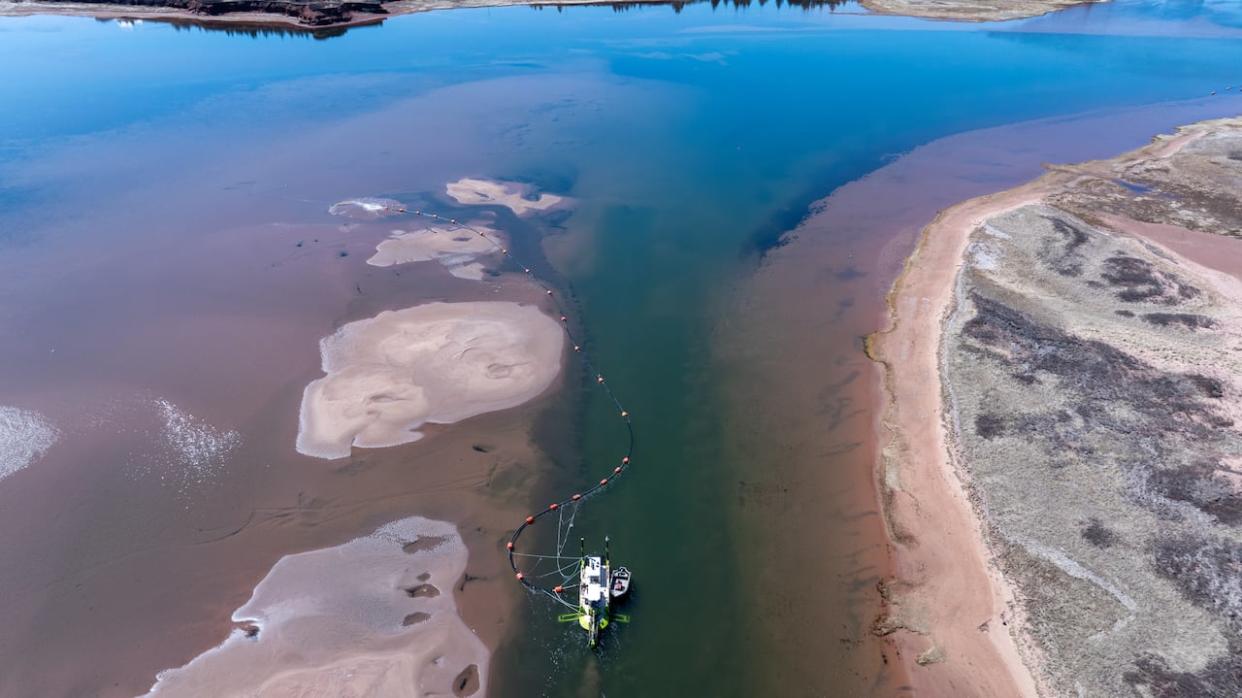
The spring lobster season on Prince Edward Island is just a few weeks away, but some harbours are facing challenges as Island fishermen prepare to head out and set their traps.
At Malpeque Harbour, windy weather has slowed down efforts to clear the winding channel that they will take on setting day.
"They've had a real hard time this year due to weather," said fisherman Timothy Wall, who has been fishing for 30 years, following the occupation of his father and grandfather.
"They've been on the site for two weeks already, and they can't even get to the outside of the harbour, just the weather hasn't been fit. The tides are are so big and so strong. It's a hard place for them to get dredging. It's not ideal. They're doing the best they can, but even right through into next week the weather doesn't look good. So it could be right down to the wire."
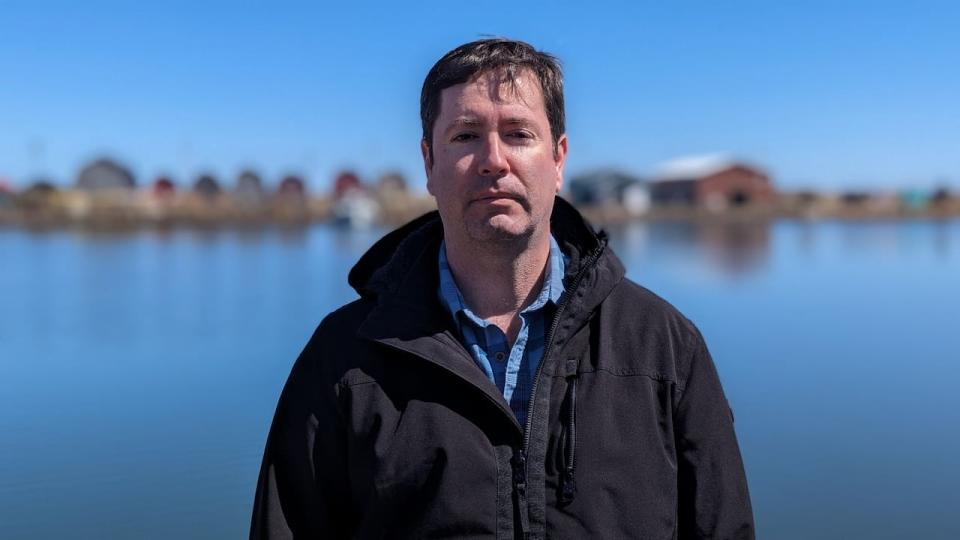
Malpeque lobster fisherman Tim Wall says it's stressful going through the channel at Malpeque, especially carrying a boatload of traps. (Shane Hennessey/CBC )
In past years, the passage to Malpeque Harbour hasn't been cleared until the very last minute before the season opened, and in some years, boats loaded with traps have run aground.
"That's pretty pretty stressful and hard too. Like you got a boatload of traps, and you got fellows on it, and it's a lot of stress," Wall said.
"I've seen boats go aground, or get stuck, or beached, and the tide just rips in there so hard some days that it's a pretty stressful spot."
A costly problem, with costly solutions
It's an annual problem in Malpeque, one that has been the subject of multiple studies over the last decade looking for a long-term solution.
In 2020, a study was conducted looking at the economic importance of the wharf, as well as potential long-term solutions, including a new harbour.
The report estimated maintenance costs for Malpeque to be $10 million over the next 25 years.
Adding in future dredging costs, infrastructure improvements and inflation, the report projected total costs to be $39.3 million, while a proposal for a new harbour was estimated to cost about $42 million.
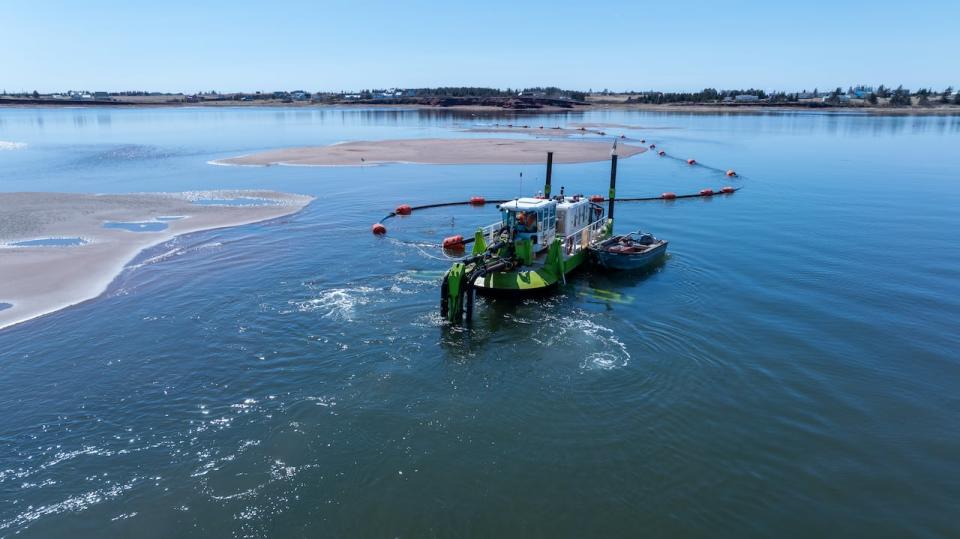
The weather has caused delays in the dredging of the channel leading to Malpeque Bay. This has been an issue for years. (Shane Hennessey/CBC )
Moving the harbour deeper into Malpeque Bay, where there is less moving sand, could be an option, said Wall, but there are no certain answers.
"There's no real easy solution. It's just there's so much sand out there, and it's constantly moving. It just seems every year the tides get stronger," Wall said.
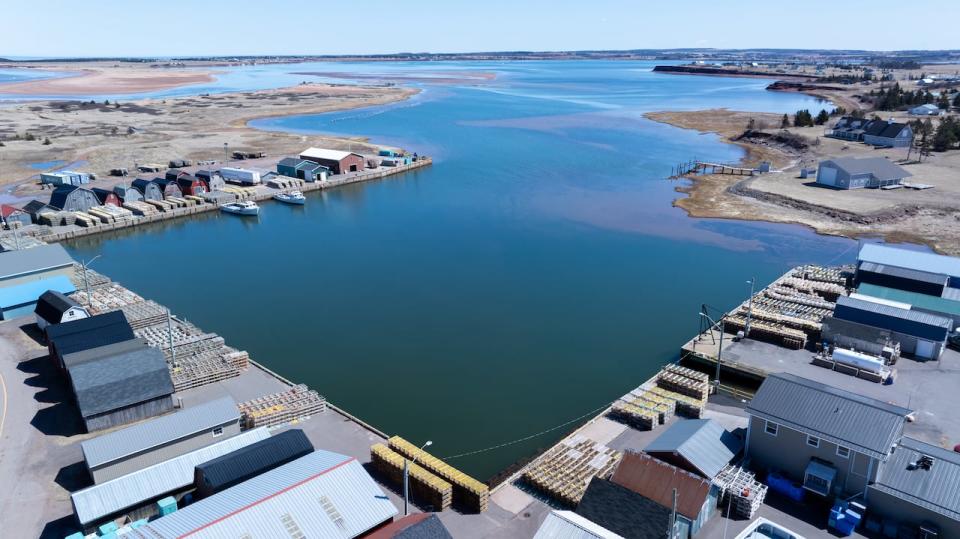
A drone view from the wharf at Malpeque showing the channel where the boats need to travel to go out fishing. (Shane Hennessey/CBC )
"Had it been done 10 years ago, it would have paid for itself by now. So the longer you wait, the more expensive it becomes."
Safety concerns make working out of the harbour a nightmare, he said.
"We would be happy for whatever solution that we might be able to actually get to work safely," he said.
Damaged wharf
At Covehead Harbour, construction is underway on a new building to replace bait sheds that were destroyed by post-tropical storm Fiona.
"It's government, and it takes time to get everything together. It's a big project," said Allan Coady,
"They're going to start on it in July hopefully. So it just takes time."
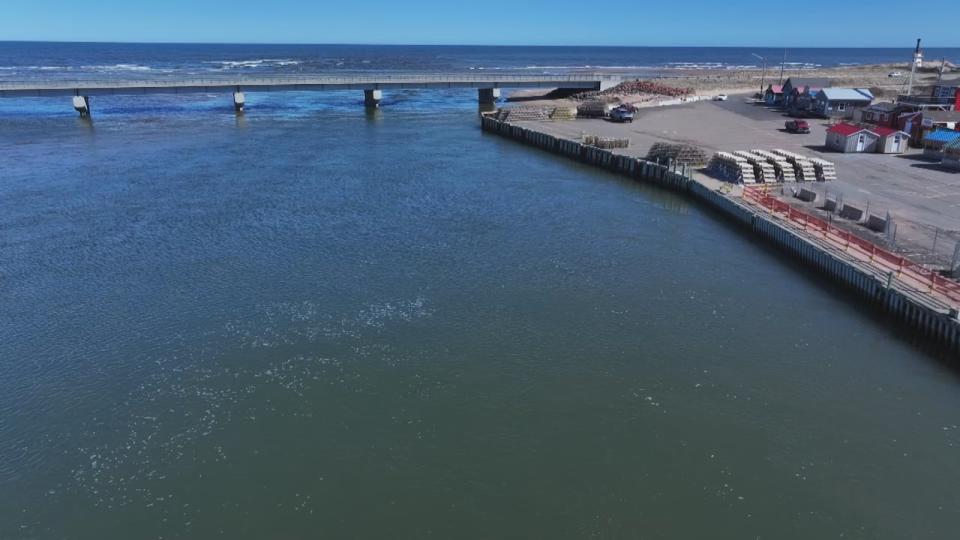
The repairs to the damage to the Covehead wharf won't start until the end of the spring lobster season. (Shane Hennessey/CBC )
The repairs also took longer because Covehead was not the only wharf damaged by Fiona, so they had to wait their turn, Coady said.
The work is expected to take a couple of years. They don't know yet what the total cost will be, or how much will be covered under Fiona compensation.
Fishermen were also hoping the repairs would include construction of a new bullpen, a sheltered area where they could put their boats in the case of an impending storm.
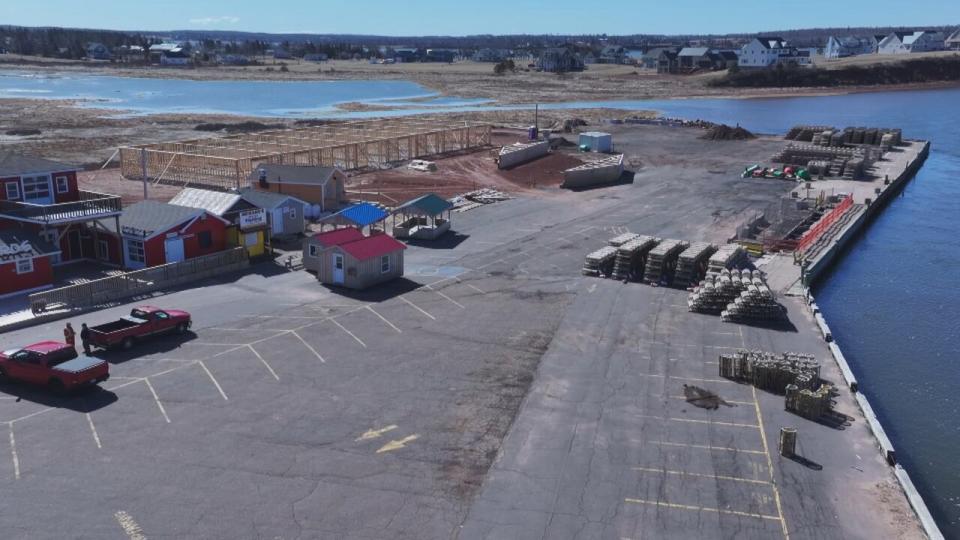
Construction is underway on a new building at the Covehead wharf, to store the lobster traps from the 16 boats in this harbour. It will replace bait sheds destroyed by Fiona, but repairs to the wharf won't begin until after the spring fishing season. (Shane Hennessey/CBC )
"We're just open to the elements and the tide runs in here, it's a very strong tide," Coady said. "The bullpen, the boats could sneak in there and be protected. I think we're the only harbour that doesn't have a bullpen, or protection of some kind, on P.E.I."
But, he said, it turns out these is no money to add that to the project.
We still definitely need it, because the storms we have seen like Fiona, they're not going to quit
—Allan Coady, Covehead lobster fisherman
"We still definitely need it, because the storms we have seen like Fiona, they're not going to quit," he said.
"They're going to keep coming, and the tides, the water, is rising all the time. I wish we would have got it, but as of now we're not getting it."
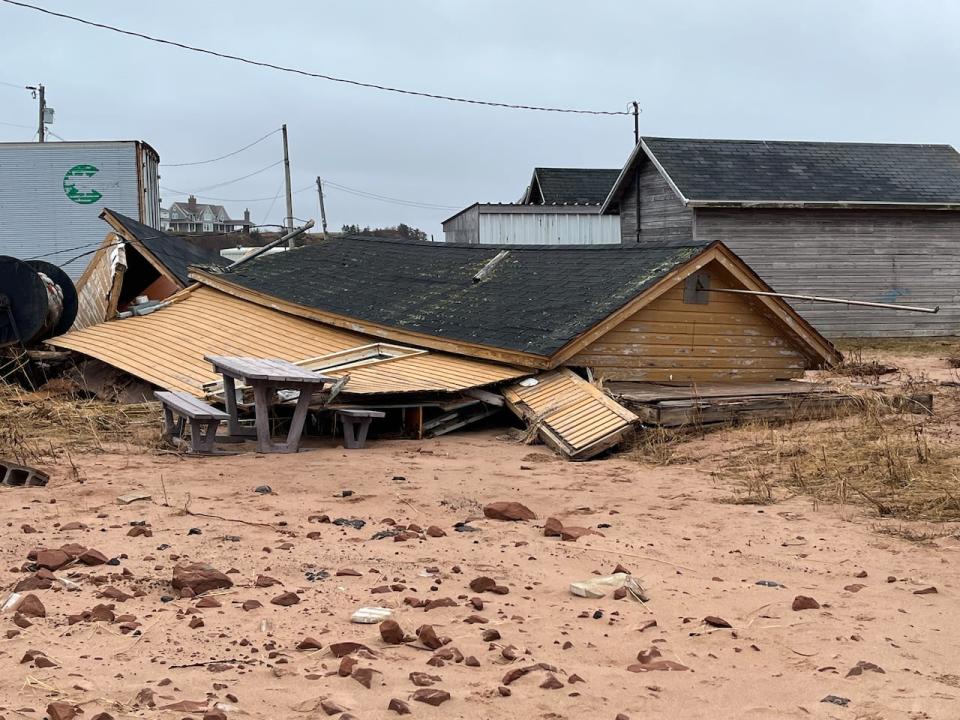
The federal government committed $100 million for urgent harbour repairs across the region in the wake of post-tropical storm Fiona. (Wayne Thibodeau/CBC)
In October 22, shortly after Fiona, federal Fisheries Minister Joyce Murray got a first-hand look at the damage caused by the storm on Prince Edward Island.
She said $100-million of a $300-million fiona recovery package announced by the prime minister would be used to support urgent harbour repairs.
The Department of Fisheries and Oceans said 133 of the more than 180 harbours it manages in the region were affected.
In a statement to CBC News, a DFO spokesperson said repairs are mostly complete.
"While there remain various scopes of work to be determined and completed at some harbour locations, there is no anticipated impact on the upcoming fishing season," the statement said.
The spring lobster season opens on April 29 on P.E.I.'s North Shore, which includes Malpeque and Covehead.

